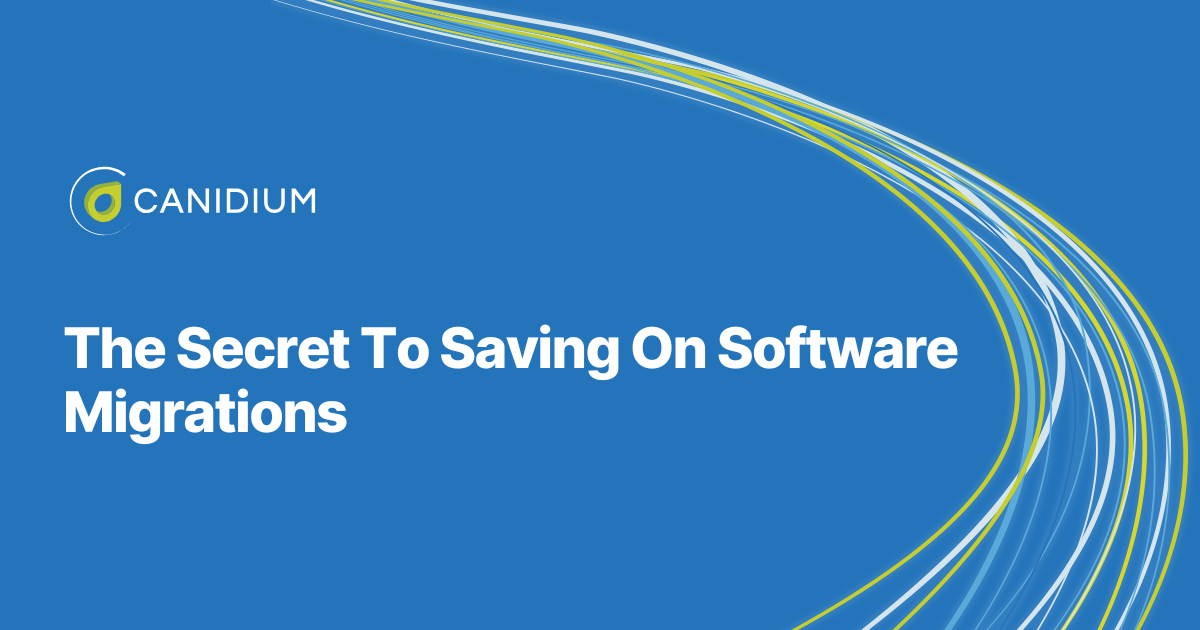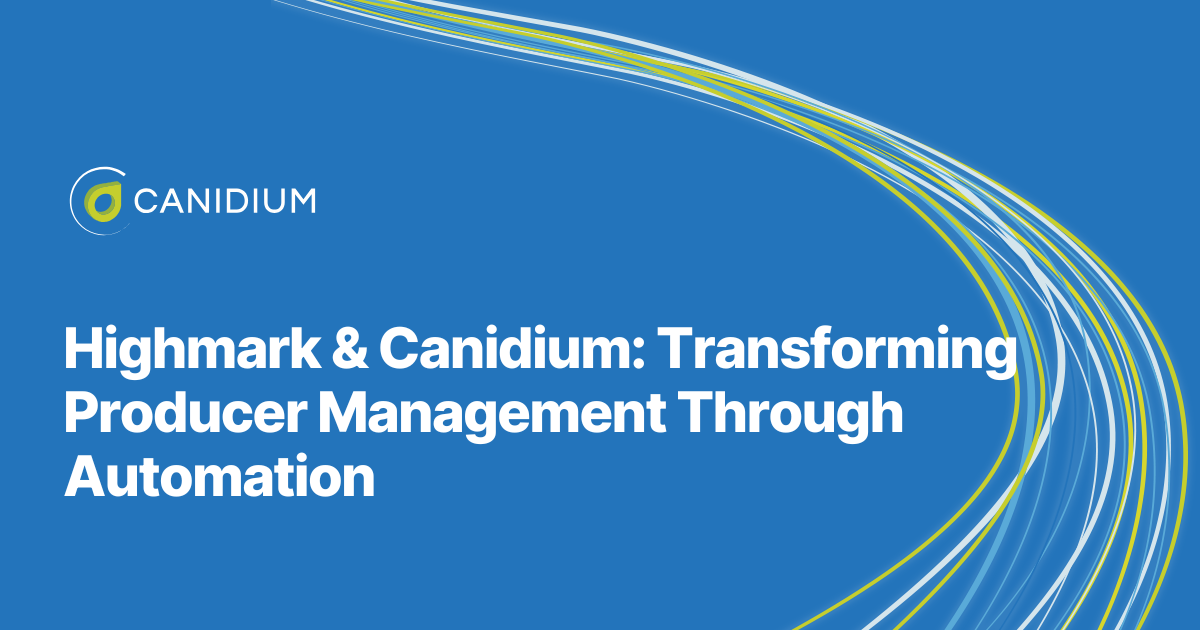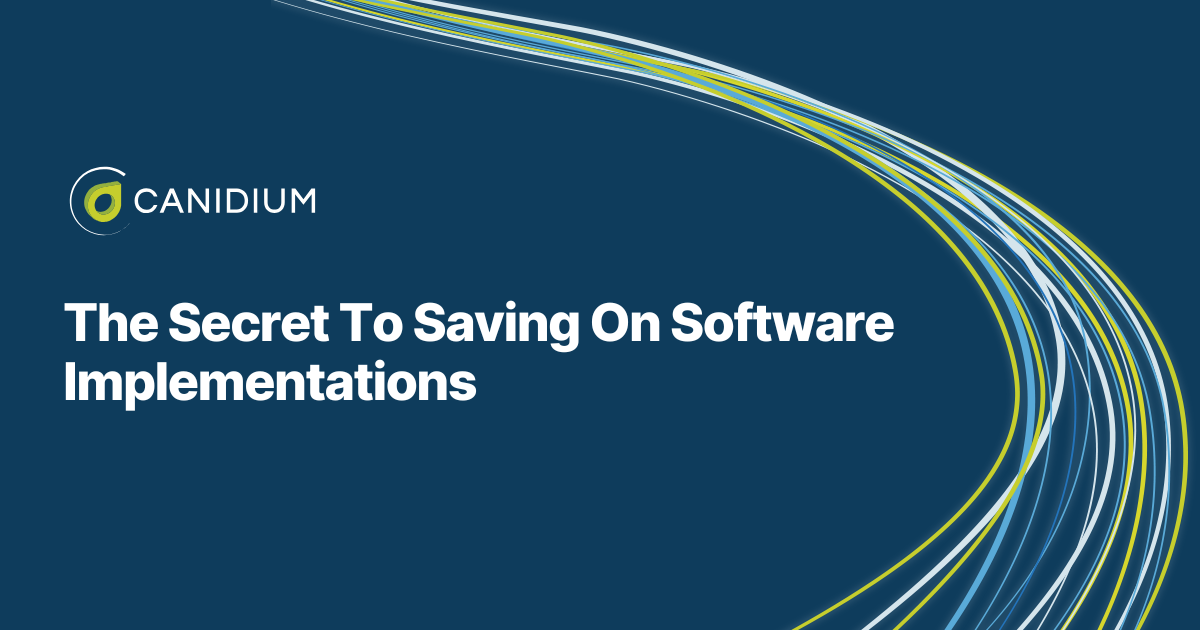The decision to part ways with your current sales performance management (SPM) solution is not one made lightly. From poor user adoption to navigating the complexities of integration challenges and inadequate reporting, each issue has the potential to alter the trajectory of an organization's sales strategy.
As a long-standing SPM implementation firm, Canidium has seen this scenario countless times. We have successfully navigated both optimizations and solution changes to help organizations meet and exceed their sales goals. Addressing the issue comes down to hiring the right experts to identify issues and fix them.
In this article, we will discuss
- The common problems that prompt organizations to reevaluate their SPM solutions
- The critical factors organizations should consider before making a switch
- How to solve existing issues to make your current SPM solution work for your organization
In this article, we explore not only the problems that drive organizations to the brink but also the considerations and collaborative strategies that can pave the way for a more informed, efficient, and strategic use of SPM solutions.
What causes an organization to consider abandoning its current SPM solution?
Several issues may prompt organizations to abandon their current sales performance management solution. These issues can impact various aspects of the sales process and hinder the organization's ability to manage and optimize sales performance effectively. Some common problems include:
Poor User Adoption
If the sales performance management solution is challenging to use or lacks user-friendly features, there may be resistance from the sales team. Low user adoption can hinder the system's effectiveness and limit the organization's ability to leverage valuable data and insights.
Lack of Customization and Flexibility
Sales processes can vary significantly between organizations. A lack of customization and flexibility in the sales performance management solution may mean it doesn't align well with a particular business's unique workflows and requirements.
Inadequate Reporting and Analytics
Robust reporting and analytics are crucial for gaining insights into sales performance and making informed decisions. If the current solution cannot generate meaningful reports, track key performance indicators (KPIs), or provide actionable insights, it may fall short of meeting the organization's analytical needs.
Integration Challenges
In today's interconnected business environment, seamless integration with other tools and systems (e.g., CRM, HRIS, planning and forecasting tools, ERP) is essential. If the sales performance management solution struggles with integration, it can lead to data silos, manual data entry, and inefficiencies in information sharing across the organization.
Outdated Technology
Rapid technological advancements mean outdated sales performance management solutions may lack the latest features, security measures, and scalability. Organizations may consider abandoning a solution if it cannot meet evolving technological requirements.
Limited Scalability
As organizations grow, their sales operations often expand. If the current solution lacks scalability, it may struggle to handle increased data volume, user numbers, and the complexity that comes with business growth.
High Costs and Low ROI
The total cost of ownership, including licensing fees, maintenance, and support costs, may become prohibitively high. If the organization perceives that the costs outweigh the benefits or the return on investment (ROI) is not evident, it may reassess the current solution.
Ineffective Incentive Management
Sales performance management solutions often include features for incentive compensation management. If these features are ineffective or result in errors in calculating and distributing commissions and incentives, it can lead to dissatisfaction among the sales team.
Poor Customer Support
Inadequate customer support from the software vendor can be a significant frustration. If organizations experience difficulties obtaining timely assistance, resolving issues, or receiving necessary updates, it can contribute to a negative perception of the solution.
Security and Compliance Concerns
Suppose the sales performance management solution lacks robust security measures or fails to comply with industry regulations and standards. In that case, it may pose a risk to sensitive sales data, leading organizations to reconsider their choice.
Factors to consider before abandoning your current SPM solution
Deciding whether to abandon your current sales performance software is a significant decision that can impact your business operations. Before making such a decision, consider the following factors:
Performance and Reliability
Evaluate the current software's performance and reliability. If it frequently experiences downtime, glitches, or is slow to respond, it may be hindering rather than enhancing your sales processes. Consider whether these issues impede your team's productivity and whether they can be resolved through updates or improvements.
Scalability
Assess whether your current sales performance software can scale with your business as it grows. If your company expands, you'll want a system accommodating increased data, users, and complexity. If your current software lacks scalability, it may be a sign that it's time to explore alternative solutions to support your future needs.
User Adoption and Satisfaction
Gather feedback from the users of the current software. If there is widespread dissatisfaction or resistance to using the system, it could indicate usability issues or a lack of essential features. Consider whether the software aligns with the needs and preferences of your sales team, and if not, explore options that better suit their requirements.
Integration Capabilities
Check the integration capabilities of your current software. In today's interconnected business environment, seamless integration with other tools and systems is crucial. Your overall efficiency might be limited if your current software cannot integrate with other essential tools (e.g., CRM, marketing automation, ERP systems). Consider whether an alternative solution offers better compatibility.
Cost vs. Value
Analyze the total cost of ownership for your current sales performance software. This includes the initial purchase or subscription cost and ongoing maintenance, support, and potential upgrade expenses. Compare this against the value the software provides to your organization. If the cost outweighs the benefits, or if you can find a more cost-effective solution with similar or better features, it may be time to consider a switch.
How can a Software Implementation (SI) partner help solve issues with your SPM solution?
Communicating concerns with your software implementation partner before abandoning your current software solution can offer several benefits. Here are some key advantages:
Problem Resolution
By communicating your concerns, you allow the software implementation partner to address and resolve any issues you're facing. They may offer solutions, updates, or additional support to rectify the problems, potentially saving you the time and effort required to transition to a new system.
Understanding Root Causes
Open communication allows you to discuss the specific challenges and limitations you're experiencing. This dialogue can help you and the implementation partner understand the root causes of the issues, whether related to software functionality, user training, or other factors. This understanding is essential for finding practical solutions.
Optimizing Current System
Your software implementation partner may provide insights into features, functionalities, or best practices you must utilize fully. Through effective communication, you can explore ways to optimize your current system to better align with your business processes and goals, potentially avoiding the need for a complete software replacement.
Customization and Updates
If your concerns involve specific functionalities that are missing or do not meet your needs, discussing them with your partner may lead to the consideration of customization options or updates to the software. Some issues can be resolved through feature enhancements or modifications tailored to your business requirements.
Cost Considerations
Abandoning a software solution and transitioning to a new one can be a significant financial investment. Conversing with your implementation partner allows you to evaluate the costs of resolving the current issues versus the expenses of implementing a new system. This informed cost analysis can guide your decision-making process.
Relationship Building
Effective communication fosters a positive and collaborative relationship with your software implementation partner. A strong partnership is valuable for ongoing support, future updates, and potential collaborations. It also ensures that both parties are invested in the success of the software implementation.
User Training and Adoption
Discussing concerns related to user adoption or training issues with your implementation partner can lead to additional training sessions, documentation improvements, or user support resources. Enhancing user understanding and proficiency can contribute to a more successful software implementation.
Abandon ship or course correct: Should you keep your current SPM solution?
Before making any decisions, it's advisable to involve key stakeholders, including sales representatives, IT professionals, and decision-makers, to ensure that all perspectives are considered. Additionally, consult with the software vendor to discuss any issues you're facing and inquire about potential solutions or updates that may address your concerns.
Before deciding to abandon a sales performance management solution, organizations should thoroughly assess the specific issues they are facing, consider potential solutions, and communicate with the software vendor to explore options for improvement. Often, problems may be resolved through updates, additional training, or customization rather than a complete system overhaul.
Now that you understand common issues that arise, factors to consider before switching, and how an SI partner can help, your next step is to learn more about technical health checks.
What is a technical health check?
A technical health check, also referred to as a system or infrastructure audit, is a process where an organization evaluates the general health, performance, and security of its IT systems, software, and hardware components. The objective is to detect any current problems, weaknesses, or opportunities for enhancement to guarantee the system's dependability, stability, and effectiveness.
Read this article: The X-Ray for SPM: How Technical Health Checks Optimize SPM Solutions
Photo by orbtal media on Unsplash








